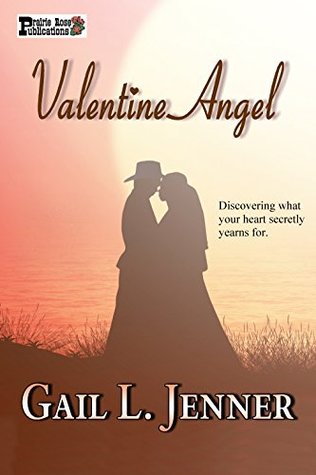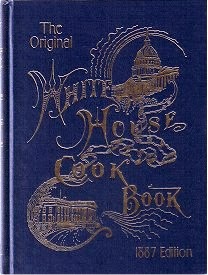BUTTE AND THE COPPER KING MANSION – Elizabeth Clements
In August, 2012, two girlfriends and I took a road trip to Butte, Montana, for no particular reason except to go on a mini-holiday. I’d never been to Montana and at the time was considering locations for another book. I’ve been fortunate to have visited all the settings of my books so I could familiarize myself with flora and fauna and the scenery. Well, I am once again hunting for a location for my current wip, which has to be set in the western United States. I’d love to use Texas or Colorado or Wyoming but have only seen them in western movies, not the same as actually being there. Then I remembered I’d taken dozens of photos on the trip to Butte and problem solved (gulp), I hope.
Butte is situated in a wide, natural bowl surrounded by bluffs in the northern Rocky Mountains of Montana. This Silver Bow Creek area was the hunting and fishing area for the native Salish people and its name originates from the Salish “Sin-tahp-kay-Sntapqey” meaning: Place Where Something Is Shot In The Head.
Butte, Montana, is an amazing city that began as a silver and gold mining camp in the late 1860s but became most famous for its huge natural stores of copper. In 1888 alone, mining operations generated $23 million, a huge sum for the times (equivalent to over $640 million in today’s money). The lure of gold and silver brought miners and fortune seekers from all over the world and Butte soon became a melting pot of European nationalities, culture, and food. In just two decades Butte became the largest city between Chicago and San Francisco.
As we explored Butte via car and guided tours, that mix of nationalities was still evident as some areas clung to their ethnic roots. Back in the day, gangs formed ethnic groups to preserve their traditions and to date, Butte has the highest percentage of Irish Americans in the United States. Some of the foods popular with the miners were easily taken with them for a cold meal underground, such as povitica, a Slavic nut bread pastry, a boneless pork chop sandwich, Scandinavian lefse and baked foods made with the readily-available huckleberry, the latter made into jam and available for purchase at several tourists spots we visited.
I was so impressed how devoted Butte citizens are in preserving their history and historic buildings, proven by the fact that in 2002 Butte was one of only twelve towns in America to be named a Distinctive Destination by the National Trust for Historic Preservation. To me, Butte is literally a photo album of elegant home and buildings mingling with old buildings sagging on tired feet, proudly showing all their cracks and peeling paint. For two nights we stayed in a hundred-year-old elegant hotel, toured a century-old jail and an abandoned state prison that made me shudder for the miscreants, some underground tours, and the infamous Berkley Pit. A tour on an old trolley took us past beautiful elegant Victorians including the famous Copper King Mansion where we spent the last night of our visit. We also visited the statue of Mary, Our Lady of the Rockies, who overlooks Butte and protects its inhabitants. (sorry for the poor quality...it was taken from afar.

Any town that grows too fast and lawless also invites the risk of earning a reputation of “anything goes”. Saloons and bordellos sprang up like weeds. The red light district flourished on Mercury Street with elegant or shoddy bordellos and cribs on Venus Alley. During our tour of Butte, we passed the famous Dumas Brothel and planned to visit it, but the only free time we had left led to disappointment because the brothel wasn’t open for tours. This infamous district was popular with not just the miners, but welcomed visitors from all over the territory and stayed operational until circa 1982.
Fortunes were made in the mining of copper, an important component in electrical power—as a result, Butte became the largest producer of copper in North America. And thus the legend of the Copper Kings was born. Three tycoons jockeyed for power in Butte in the 1880s. The rivalry between William A. Clark, Marcus Daly, and F. Augustus Heinze became heated in their bid for power. Clark and Daly each established their own newspaper to help influence their political agendas with the miners and the general population. Clark had studied law in his early years, then traveled to Colorado to mine for gold, invested his gold and eventually amassed a fortune through his copper mines, railroads, and newspapers.

It took William Clark four years to build his elegant red brick mansion (1884-1888), which is beautifully preserved (restored in 2011) and the large, airy rooms are filled with exquisite woodwork, stained glass, antiques, paintings, and bric-a-brac. The mansion had remained unoccupied for many years when William Clark left to again live in New York in 1999, where he built two mansions. The Copper King Mansion is now a bed and breakfast and is open for daily tours to help maintain its upkeep. We spent the final night of our vacation there (but encountered nary a ghost) and enjoyed a lovely, elegant breakfast. The only drawback was we had to remove all traces of our occupancy during the public tour. Of course, I took lots of interior pictures, far too many to include here.

This wealthy magnate created a retreat for families and their children to enjoy a bit of life away from the mines by purchasing the Columbia Gardens and developing it into an amusement park, complete with a pavilion, rollercoaster and a lake for swimming and boating. Two Boston investors and a wealthy miner formed the Boston and Montana Marching Band to add to the entertainment of the community. With all these amenities, Butte earned the rank of the first mining camp of the world and for a time became Montana’s most populated city. It also became known as “the richest hill on earth” because of the copper, silver and gold mined there.
There is a treasure trove of information about Butte’s mining history, which is too voluminous to get into here, but I have to touch on The Berkely Pit, which, to coin a favorite English adjective of mine….had me gobsmacked! This pit is HUGE. It’s one mile long and a half mile wide and 1780 feet deep. Absolutely boggles my mind, hence the adjective. The phrase, “the pit is a giant bathtub” is an excellent description. It’s hard to wrap my head around 7,000,000 US gallons of treated water per day being discharged from the Berkely Pit into Silver Bow Creek just to keep the pit water from contaminating the groundwater. Great safety measures are in place to protect birds and wildlife from this contaminated site because this lake is toxic to birds, animals, and humans.

“From 1880 through 2005, the mines of the Butte district have produced more than 9.6 million metric tons of copper, 2.1 million metric tons of zinc, 1.6 million metric tons of manganese, 381,000 metric tons of lead, 87,000 metric tons of molybdenum, 715 million troy ounces (22,200 metric tons) of silver, and 2.9 million ounces (90 metric tons) of gold." After the closure of the Berkeley Pit mining operations in 1982, pipes which pumped groundwater out of the pit were turned off, resulting in the pit slowly filling with groundwater, creating an artificial lake. Only two years later the pit was classified as a Superfund site and an environmental hazard site. The water in the pit is contaminated with various hard metals, such as arsenic, cadmium, and zinc.”
The usually big blue sky that Montana is famous for was hazy the entire time of our stay from the numerous area forest fires, which helped temper the usual August prairie heat. Butte is an amazing city, full of history and beautifully restored buildings as well as ones showing their wrinkled, worn faces. There are so many places to visit, especially The World Museum of Mining, which is a fabulous recreation of a mining town with dozens of historic buildings.
Easily plan an entire afternoon for that stroll through history and peek through all the windows. This is one of the many buildings in the park...a lady of the evening gazing out her window
Mary, Our Lady Of The Rockies stands on The Continental Divide and watched over Butte, and is well worth a little side trip. In a nearby town, we also visited a car museum (sorry I can’t recall the name of the town) that has an abandoned state prison open to the public and nearby is the most amazing collection of vintage cars. If you are planning a trip to Montana, definitely pencil in a few days to explore Butte, a visual feast for the eyes of any history buff. I’d go again in a heartbeat and stay longer, especially in the awesome Copper King Mansion. Hmmm, I believe there’s another story idea there….
I would love to hear from anyone who has visited Butte, or had an interesting experience exploring an area rich with history. There are so many fascinating, historic places that I don’t think a person can live long enough to explore them all.
Facebook
Twitter
Website www.elizabethclements.com
My Amazon Author’s Page
Prairie Rose Publications Author Page
Prairie Rose Publications Blog
Posted by Elizabeth Clements
Labels: Elizabeth Clements Butte Montana Copper Kings Copper King Mansion
































